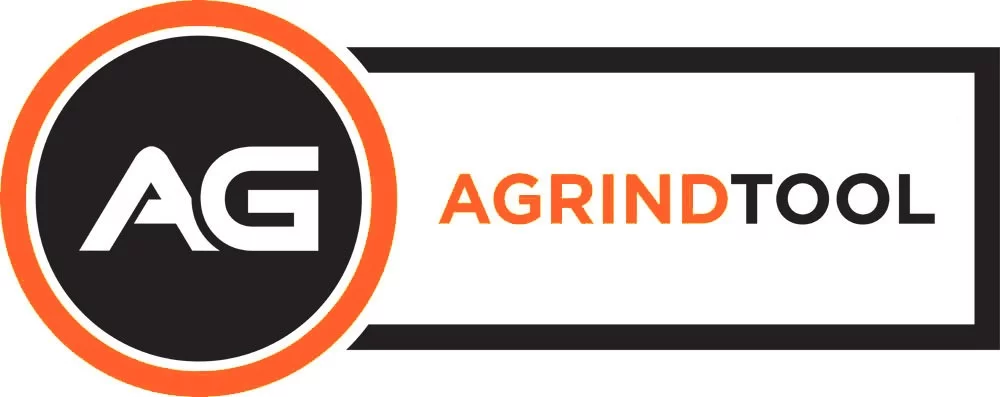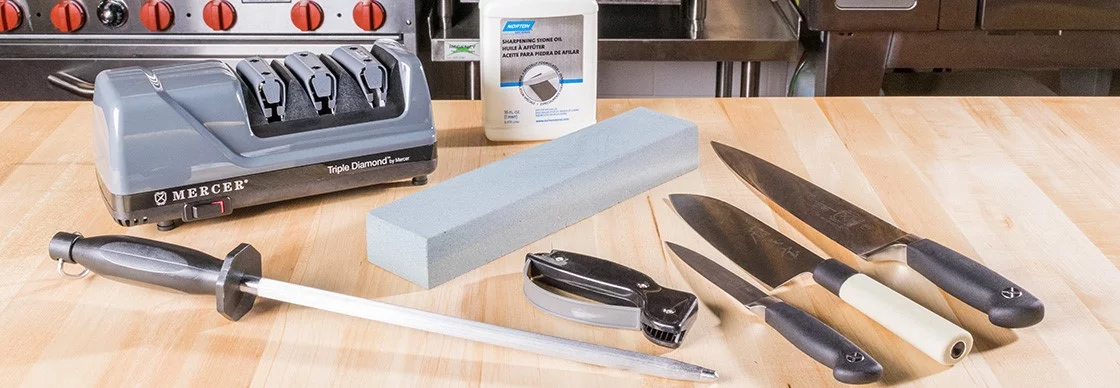Scissors are small hand-operated cutting tools with two blades screwed together to cut different materials such as cloth and paper. Although the blades are sharp when the scissors are new, they can become dull and incapable of cutting through materials after some extended period of use. When this occurs, the solution is not to purchase a new one but to find an effective way to sharpen the blades.
Sharpening scissors professionally can be expensive, and that’s why it would be great to learn how to sharpen scissors with a knife sharpener. The process is what you can do on your own to have your hand-operated tools performing well as they should. Never give room to blunt blades. With a knife sharpener, you can regularly restore your dull scissors to razor sharpness in an easy way.
Knife Sharpeners and Their Types
Knife sharpeners are technically kitchen tools made to file or hone cleanly the cutting edges on any steel blades of knives and other tools with cutting edges. These cutting tools can be manual, electric, steel, stones, or sharpening systems.
Types of Knife Sharpeners
Below are the different types of knife sharpeners you need to know when thinking of purchasing one for your cutting tools:
- Handheld or Pull-Through Sharpeners
These sharpeners feature a slot for pulling the knife. They do not involve spinning motion, which makes their working process lower compared to the electric type. Instead of pulling the blade through, you can also use the handhelds to pull the sharpener over the blade.
Compared to electric sharpeners, handheld sharpeners give room for better precise control of the sharpening process. They are user-friendly but may require more physical effort.
Structurally, handheld sharpeners are smaller and more portable than the electric type. With them, you can enjoy a good and sharp edge. Besides, they feature angle guides, making the entire process straightforward and easy to learn.
- Electric Knife Sharpeners
Electric knife sharpeners are handy appliances used in sharpening the blades of knives and other cutting tools. They are user-friendly and require less effort to get knives well-sharpened. These sharpeners are designed with two or more slots for pulling the knife blade. The blades are ground and sharpened by the spinning sharpening stones as they pass through.
Guides come with a good electric sharpener. With them, you won’t be ignorant of where to put the knife and the proper angle for grinding. You should remember that angles must be considered to get a correct sharpening of a knife blade.
Although electric knife sharpeners are great for the sharpening process, users are not granted much control. So, you must be careful while using them to prevent them from taking off more metal from your tool, which may affect the service life of the knife.
- Sharpening Steel or Knife Hone
Sharpening steel, also called knife hone, honing steel, or honer works differently compared to other knife sharpeners. Its function is primarily honing and not sharpening. This implies that it helps realign the bent edge of the blade–sharpening steel straightens the edge back and true it, making it perform as if it’s been sharpened.
Since the steel is not sharpening the edge of your knife, it will make it have a longer service life. Notwithstanding, there is a place for learning how to use the rod, the required pressure to apply, and the way to hold the knife at a proper angle.
- Sharpening Stones or Whetstones
Sharpening stones are designed to help knives have their sharpness back. This is done by moving them back and forth across the stone. This method is the oldest as far as sharpening a knife is concerned. Besides, it’s claimed that the stones offer the best sharpening results.
- Knife Sharpening Systems or Guided Systems
The way a sharpening system works is different from other knife sharpeners. Here, operators will clamp the knife on the unit and sharpen the edge using a whetstone. This tool is great as it offers the precision control of the sharpening element and supports sharpening at any angle.
Can I Sharpen Scissors with a Knife Sharpener?
Scissors with dull blades can be sharpened with two tools, including a specially-designed sharpener for scissors or a knife sharpener. It’s advisable to get a knife sharpener because it is multifunctional– you can use it to sharpen various blades. Notwithstanding, scissor sharpeners are also preferable based on the fact that they are safer to use– they ensure that the blade is contained. Besides, they are capable of sharpening the blades at once.
How to Sharpen Scissors with a Knife Sharpener?
The use of a knife sharpener is not rocket science in any way. The most important thing is to know and understand the methods to use. The conventional method usually includes disassembling the scissors by getting the bolts unscrewed and sharpening the blades individually. However, if the blades are fastened together, you should safely keep one of the blades out while you sharpen the other.
Since different types of knife sharpeners can be used for sharpening blunt scissors, our focus will mainly be on the use of sharpening stones or whetstones because it is considered the tool that offers the best results.
How to Sharpen Scissors with a Knife Sharpener: The Use of Sharpening Stones/ Whetstones
Are you looking for the best tool to sharpen your scissors? A knife sharpener is one of the best options. A sharpening stone or whetstone, as one of the various types of knife sharpeners, is entirely user-friendly and helpful for operators (professionals or beginners).
You should note that this method works best when the blades of the scissors are separated. Nevertheless, it remains an effortless way with a process that only takes a short time. Below is the step-by-step direction of how to use a whetstone to sharpen your scissors:
- Purchase your Sharpening Stone/Whetstone: You should start by getting an accessible whetstone from the market. A sharpening stone features two different sides: the coarser side and the finer side. The coarser side is designed for sharpening very dull blades, while the finer side is made for less dull blades.
- Disassemble the Scissors: Pick the scissors and separate the blades. You can do this by unscrewing the bolts (if not riveted). The blades will automatically separate once the screw is detached. With this, you can have an effortless sharpening.
- Choose the inner part to sharpen: After the separation, select one of the blades and place its inner side on the sharpening stone. The best way to ensure that the inner blade is sharpened well is by grabbing it into the stone. Do it continuously for not less than ten times or more (depending on your need and scissors types). The result will be the sharpening of the flat’s inner side of the blade. Follow the same process for the second blade after successfully sharpening the first one.
- Work on the blade’s edge: Now, it’s time to sharpen the blade’s edge. Hold the handle of one of the blades and place it on the stone to cut the edge. Begin to sharpen it continuously until the work is complete on the horizontal area. For this process, the finer side of the stone is recommended. This will give the needed sharpness and smoothness. Do the same for the second blade.
- Remove the Burrs: After a sharp and smooth finish, reassemble the scissors. At this juncture, you may see some burrs (a rough burrs ridge edge on a metallic object left by a tool or a machine). These can be removed handily by continuously opening and closing the scissors for cutting cardboard or paper. This will help ensure that the rough burrs are removed from the scissors.
- Time for a Clean-up: The final step is to clean the scissors correctly after checking to see if it’s sharper than before. For cleaning, you can use a paper towel or clothes to wipe the blade’s germs down. And don’t forget to handle the tool carefully to prevent injuries.
Can I Use a Sharpening Steel or Knife Hone to Sharpen Scissors?
While working on a chef’s knife, honing should precede sharpening. Honing will help straighten out the rough edge of the blades after the sharpening procedure. Nonetheless, the case is a bit different when working on scissors. Honing is not required after sharpening the blades. All that is needed is to snip together the scissors’ blades a few times and see how the blades hone each other.
Conclusion
Many will consider scissors as easy-to-find and inexpensive tools that can quickly be replaced when they become dull or blunt. Nevertheless, they are essential tools for other people that use them daily. For these sets of individuals, it will become expensive to replace them every time they become dull. So the best and cheaper way is to sharpen them when they are not functioning effectively as expected.
It’s essential to understand how to sharpen scissors with a knife sharpener. Through this, you can ensure the extended service life of the tools. The available types you can use in the sharpening process include sharpening stones/ whetstones, electric knife sharpeners, handheld sharpeners, and knife sharpening systems. To know more, visit our website at agrindtool.com.
.

